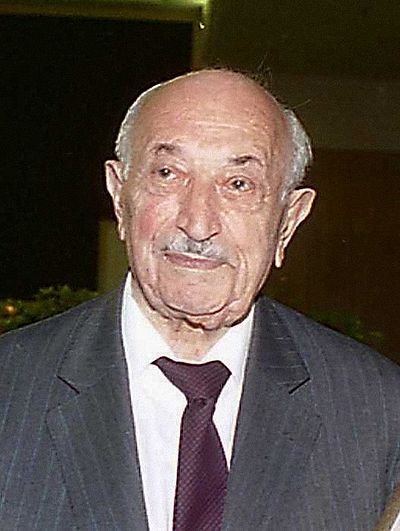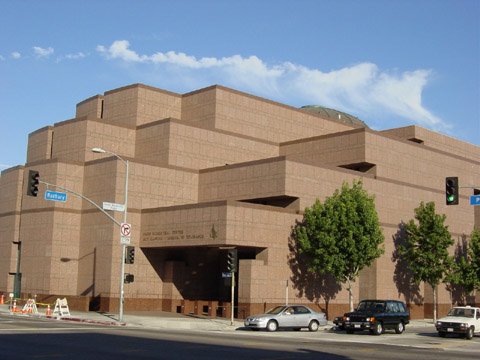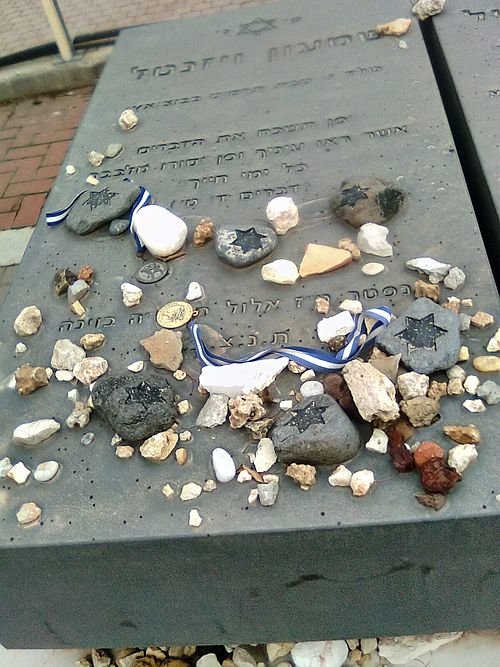Simon Wiesenthal: The Nazi Hunter
Simon Wiesenthal, born on December 31, 1908, in Buczacz, Galicia, and passing away on September 20, 2005, in Vienna, was a renowned Jewish architect who became known as the "Nazi hunter." As a Holocaust survivor, he dedicated his life to gathering and documenting information about Nazi war criminals with the aim of bringing them to justice. He succeeded in bringing over 1,100 war criminals responsible for mass atrocities during the Holocaust to trial. He lived and worked in Vienna, Austria.
Early Years
Simon Wiesenthal was born to Asher (Anshil) and Rosa Wiesenthal, despite being born just before midnight, he was officially crowned as the first Jewish child born in Buczacz in 1909. This was a belief held by his maternal grandparents that it would bring good luck. His father, a refugee from Tsarist Russia (1869-1917), settled in Buczacz, Galicia, which was then part of Austro-Hungarian Empire and engaged in the sugar and other trade businesses.
At the time, Buczacz was a town with about 10,000 residents, the majority of whom (approximately 60%) were Jewish. Simon Wiesenthal grew up in a traditional Jewish environment deeply influenced by Chasidic culture.
His family spoke Yiddish at home and Polish on the streets. His mother, Rosa, who was knowledgeable in German literature, taught Simon German (later in life, he also learned Czech, Russian, and English, although he never learned Hebrew). In his early years, he enjoyed relatively comfortable living as his father had a relatively high income compared to the poverty in their region.
Childhood during World War I
With the outbreak of World War I in 1914, his father, serving as a reservist in the Austro-Hungarian army, was drafted into active service and died in battle on the Eastern Front in 1917. During this period, when the Russians gained control of Galicia, and anti-Semitic Cossacks and Jewish persecutors descended on Buczacz, Rosa Wiesenthal and her sons Simon and his younger brother Hillel were forced to flee.
They found refuge in Vienna, Austria, where they lived with distant relatives in the Rudolfsheim-Fünfhaus district, which was populated mainly by poorer residents and more observant Jews. Simon Wiesenthal grew up in this environment and attended a traditional Jewish school heavily influenced by Chasidic culture.
When the Russians eventually retreated from Galicia in 1917, Simon's mother returned to Buczacz with him in an attempt to recover what remained of their private property: a warehouse and a house. Simon, emotionally attached to his brother, missed him so much that his mother sent him back to Vienna.
Between the World Wars
Six months after Simon's return to Vienna, the Austro-Hungarian Empire collapsed. All family members who remained in Buczacz, which had become part of Poland at that time, experienced ongoing changes in governance. The Bolshevik Russians attempted to seize control, while the Poles sought assistance from the brutal Ukrainian forces under Simon Petlura.
"We would wake up in the morning not knowing who ruled that day," recalled Wiesenthal. Buczacz suffered greatly from violent aggressions by Petlura's forces, and one vivid memory for Wiesenthal was when the Cossacks threatened to burn the town to the ground unless they produced 100 liters of schnapps by nightfall.
Two elderly Jews were forced to drag a cart from house to house, collecting as much alcoholic beverage as they could find. When he was about ten years old, Simon ran across the street on an errand for his mother when he was attacked by a larger Cossack who stabbed him in the leg. His leg was severely injured, and the bayonet lodged deep within his bone.
In 1923, Wiesenthal gained admission to the gymnasium in Buczacz, a high school primarily attended by Jewish students. Later that year, his younger brother Hillel suffered an accident, breaking his back, and he succumbed to his injuries shortly after. In 1926, his mother remarried to a Jew named Isaac Halperin and moved to Dolyna, a small town at the foot of the Carpathian Mountains, where her husband owned a lumber mill.
Wiesenthal pursued an education in engineering and architecture, graduating in Prague in 1932. He moved to Lviv in Poland and worked as an architect. In 1936, he married Cyla Müller, whom he had met at a high school.
World War II
Simon Wiesenthal was living in Lviv when World War II broke out. As part of the Ribbentrop-Molotov Pact, Western Ukraine, including Lviv, was annexed to the Soviet Union on September 17, 1939. His father and older brother, who had remained in Lviv, were killed by agents of the NKVD as part of an anti-Polish purge aimed at exterminating all "Polish enemies of the people" in Lviv. Wiesenthal was forced to close his business and work at a local railroad workshop under compulsion.
He also became a commissar for the NKVD to prevent his own deportation and that of his wife and mother to the Siberian gulag. When Nazi Germany invaded the Soviet Union in June 1941 as part of Operation Barbarossa, Wiesenthal and his family were captured.
Wiesenthal spent the war years surviving in various concentration and extermination camps. Initially, he and his wife were confined to the Buczacz ghetto, where they were taken with his mother. In late 1941, Simon and Cyla were imprisoned in the Janowska concentration camp on the outskirts of Lviv, where they were forced into slave labor in the local railroad yards.
Simon Wiesenthal worked in the repair yard of the Lviv railway, where he was compelled, among other things, to paint crosses and eagles on Soviet railcars that were seized as spoils. The chief of the Gestapo in Lviv was a man named Heinrich Günther. In one incident, Günther asked Wiesenthal if he was educated.
Wiesenthal, who knew the Nazi doctrine that "an educated Jew is a dead Jew," lied and claimed he was a graduate of a vocational school. Several people testified that he lied, and Günther confronted him. When asked why he had lied, Wiesenthal admitted the truth. To his surprise, Günther praised him for his education and assigned him the task of architectural design.
Wiesenthal's mother, who was unable to work due to her age and the scarcity of food in the camp, was sent from the ghetto to the Belzec extermination camp, where she perished in August 1942. Around the same time, Cyla and Simon Wiesenthal learned that his mother had been murdered in Buczacz by an Ukrainian policeman while hiding in an attic.
Cyla and Simon Wiesenthal lost 89 family members during the Holocaust. Following his mother's murder, Wiesenthal turned to the Polish underground army, known as Armia Krajowa (AK), for help, and they aided Cyla Wiesenthal's escape from the camp, providing her with counterfeit documents in exchange for sketches of the railroad junctions drawn by Simon's husband, who continued working for the Nazis until the war ended. Cyla's escape was facilitated by Polish AK member Jan Karski, who later became famous for his efforts to alert the world to the Holocaust.
In August 1944, as the Red Army approached Lviv, Simon Wiesenthal and a group of inmates managed to escape from the Janowska concentration camp. Cyla, who had been hiding with Poles, was reunited with him, and they decided to marry in a small ceremony in a chapel.
Nazi Hunter
After World War II, Simon Wiesenthal dedicated his life to bringing Nazi war criminals to justice and ensuring that the memory of the Holocaust was preserved. He set up the Jewish Historical Documentation Center in Linz, Austria, in 1947, which was responsible for collecting and preserving evidence of Nazi crimes. He played a significant role in the capture and prosecution of numerous Nazi war criminals, including Adolf Eichmann and Franz Stangl, the former commandant of the Sobibor and Treblinka extermination camps.
Wiesenthal's work also extended beyond tracking down war criminals. He actively worked to raise awareness about the Holocaust and combat anti-Semitism. He published several books, including "The Murderers Among Us" and "Justice Not Vengeance," in which he shared his experiences and insights into his pursuit of justice.
Legacy
Simon Wiesenthal's tireless efforts to seek justice for the victims of the Holocaust earned him numerous awards and honors. He received the U.S. Presidential Medal of Freedom in 2000 and was knighted in both Austria and France. His work has had a lasting impact on the understanding of the Holocaust and the prosecution of war criminals.
Simon Wiesenthal passed away on September 20, 2005, at the age of 96 in Vienna, Austria. His legacy continues through the Simon Wiesenthal Center, an organization he founded to promote human rights, combat anti-Semitism, and carry on his work of documenting and pursuing Nazi war criminals.
- שמעון ויזנטלhe.wikipedia.org


